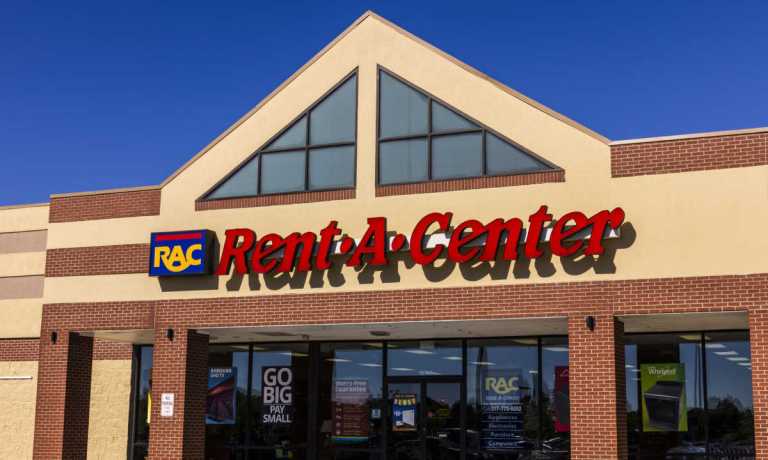Rent-A-Center Sparks Rethink of Rent-to-Own Model

The rent-to-own and lease-to-own retail concepts that seem tailor made for recession-pressed consumers with subprime credit are in fact seeing their models tested by an unforgiving market where shoppers are showing a preference for bargains and extra sensitivity toward fees.
The latest example of this low-end shift was seen Thursday (Sept. 29) in a statement from category leader Rent-A-Center, which lowered its outlook for the coming quarter and extended the year to date decline of its stock to more than 60%.
“External economic conditions have continued to deteriorate over the past few months. This has affected both retail traffic and customer payment behavior,” CEO Mitch Fadel said in the business update statement, noting that “the recent inflationary conditions had been especially challenging for our customers.”
Even so, the head of the Texas-based operator of close to 2,000 retail locations and the Acima financing arm said he “remained confident in the longer-term resiliency of the business even during economic downturns.”
Also covered in the Thursday announcement is that former Santander Consumer USA Chief Financial Officer Fahmi Karam is joining RAC as its new CFO effective Oct. 31, replacing Maureen Short who departed the company on Sept. 28, RAC said.
At question is whether Karam’s background in consumer finance, pricing and analytics will mean modifications to the core RAC business model as it struggles in an inflationary climate where logic dictates more strapped consumers would be it as an affordability play.
This weakness in rent-to-own was already apparent in summer, as Fadel told analysts in early August on its Q2 earning call that “As the second quarter progressed, we began to see indications that macro weakness was causing lease volumes and payment behavior to trend below our assumptions for the second half of the year.”
“These trends have continued,” he said then, “and it became clear that if the current weak environment continued for the rest of the year, we would not achieve the full year 2022 financial targets introduced back in February.”
The Acima eCommerce unit, acquired in 2020, had a harder go in Q2 with revenues down 16.5% year-over-year, while RAC’s physical stores were faring better, but still down 3.1%.
RAC has taken heat over merchandise quality (items are often used and limited to in-store inventory), as well as high interest rates that are tough for its base of largely subprime customers. Despite the access it provides to those with few options for big-ticket furniture and durable goods purchases, consumers are holding off more in this current climate.
See also: Rent-A-Center’s Acima Unit Names New Management
Lease-to-Own Hit By Spending Shift
While rent-to-own may be just that — a rental that is eventually returned — lease-to-own (LTO) typically obligates the consumer, who often ends up owning items after satisfying lease terms.
LTO category leader Katapult also failed to meet earnings expectations in Q2, with CEO Orlando Zayas telling analysts on a Q2 earnings call in August, “The challenging macro environment for both our retailers and our consumers continued into Q2 2022, including inflationary pressures and shifts in spending away from durable goods, which impacted our gross originations, revenue and lease portfolio performance for the quarter.”
Read: 25% of Millennials Familiar With Lease-to-Own Won’t Shop if It Isn’t on Offer
The LTO option is seen as step-up from the rental model, as merchandise is new and available in the makes, models and styles consumers want, rather than what’s in-stock and on-site. LTO terms can be rental based where items are returned, although it leans toward ownership.
The study Finding Retail’s Invisibles: Leveraging Flexible Digital Payments To Reach Underserved Durable Goods Customers, a PYMNTS and Katapult collaboration, surveyed over 2,100 U.S. consumers noted, “Consumers who choose lease-to-own cited flexibility (79%) as a top reason why. Leasing to own allows consumers to make payments on a product over time while using it — along with early purchase options or the choice to return it without further obligation if it no longer is needed or wanted.”
Of those respondents, 75% said lease-to-own options were the only way they could afford to the transaction, and 73% said it allowed them to obtain items they needed immediately.
In a PYMNTS interview, Zayas said merchants benefit from using LTO solutions like Katapult, telling PYMNTS ““It boils down to prioritization. If you look at how much volume we can bring a retailer, it’s anywhere from 3% to 10%, maybe 15% of incremental sales, which is a huge amount. For any retailer, even a 4% increase in sales, and they’ll jump at the chance.”
See also: ‘Big Ticket’ Retailers That Offer Lease-to-Own Financing Well Positioned to Help Stretched Consumers
For all PYMNTS retail coverage, subscribe to the daily Retail Newsletter.